Prospects interact with brands multiple times before making purchase decisions or becoming repeat customers.
What if you could identify these touchpoints and optimize your marketing efforts to increase customer engagement?
By mapping the customer journey, you learn how customers engage with your brand at every step. Throughout this process, you can also make data-driven decisions to improve marketing and customer experience.
What Is the Customer Journey?
The customer journey is a sequence of actions people take before, during, and after buying from your business. It covers the entire series of interactions customers have with your brand, from the moment they first learn about your products or services to the point where they become repeat buyers.
Customer Journey vs. Buyer Journey
Although it shares some similarities with the buyer journey, there's an important difference between these two concepts. The buyer journey ends when the customer makes a purchase. In contrast, the customer journey includes post-purchase activities.
5-Stage Customer Journey
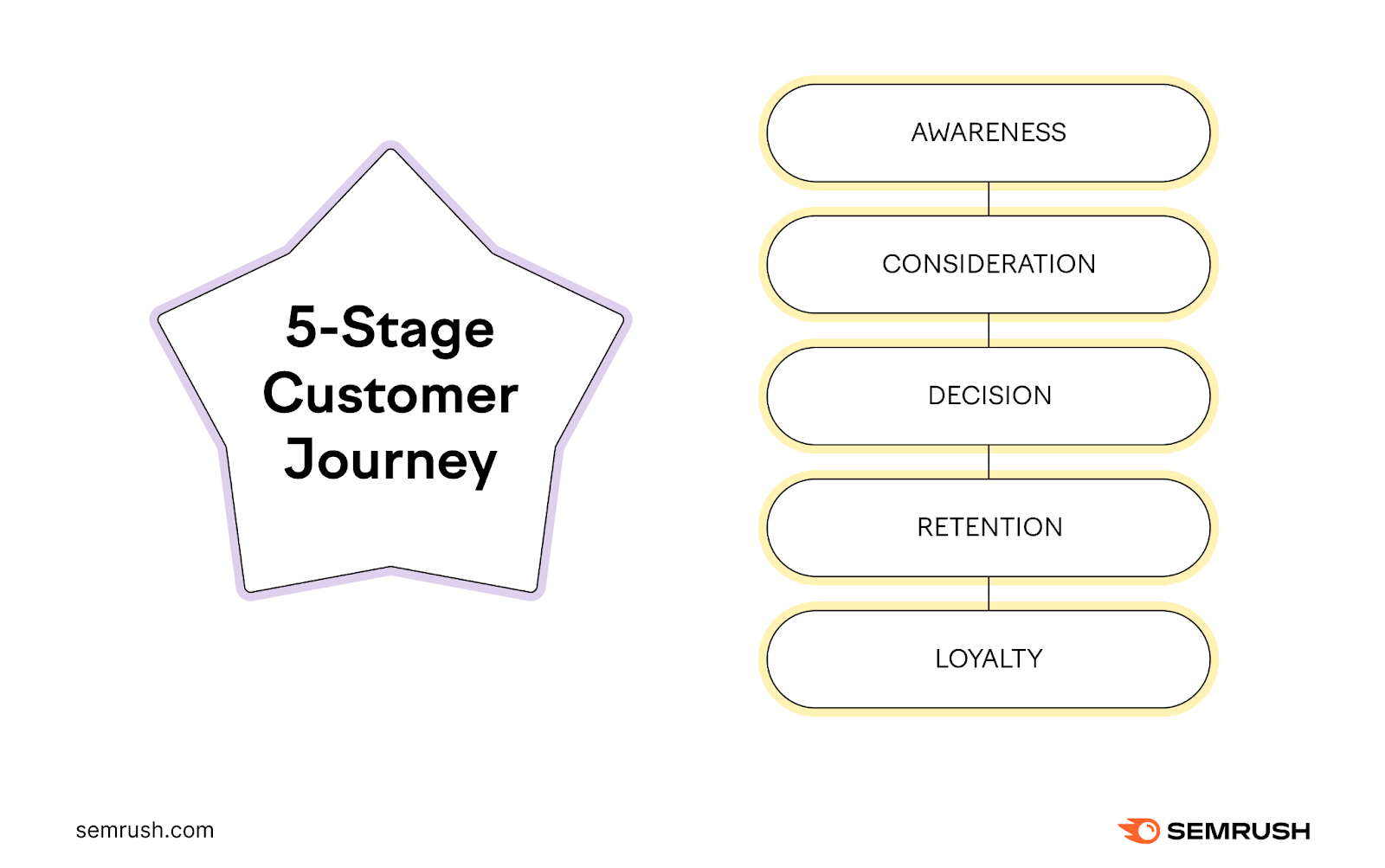
Stage 1: Awareness
At the awareness stage, your ideal customers are conscious of a problem, and they're beginning to seek solutions. As customers research, they become aware of brands and learn about products or services.
Customers don't intend to make a purchase decision at this stage. Instead, they're collecting information. As a result, educational content is the most effective for marketing during the awareness phase.
Examples of awareness-focused marketing initiatives include:
- Organic social media posts that introduce your brand, products, and services
- Educational blog posts that prospects can easily find when using search engines to find solutions
To create blog posts that prospects can easily find via search, you first need to know which keywords your ideal customer is searching for at the awareness stage. Use Semrush’s Keyword Magic Tool to identify these keywords.
Start by entering a seed keyword or the general topic of your blog post. Click “Search.”

You’ll see a list with thousands of keyword ideas. To find ideas for the awareness stage, open the “Intent” menu, select “Informational,” and click “Apply.”
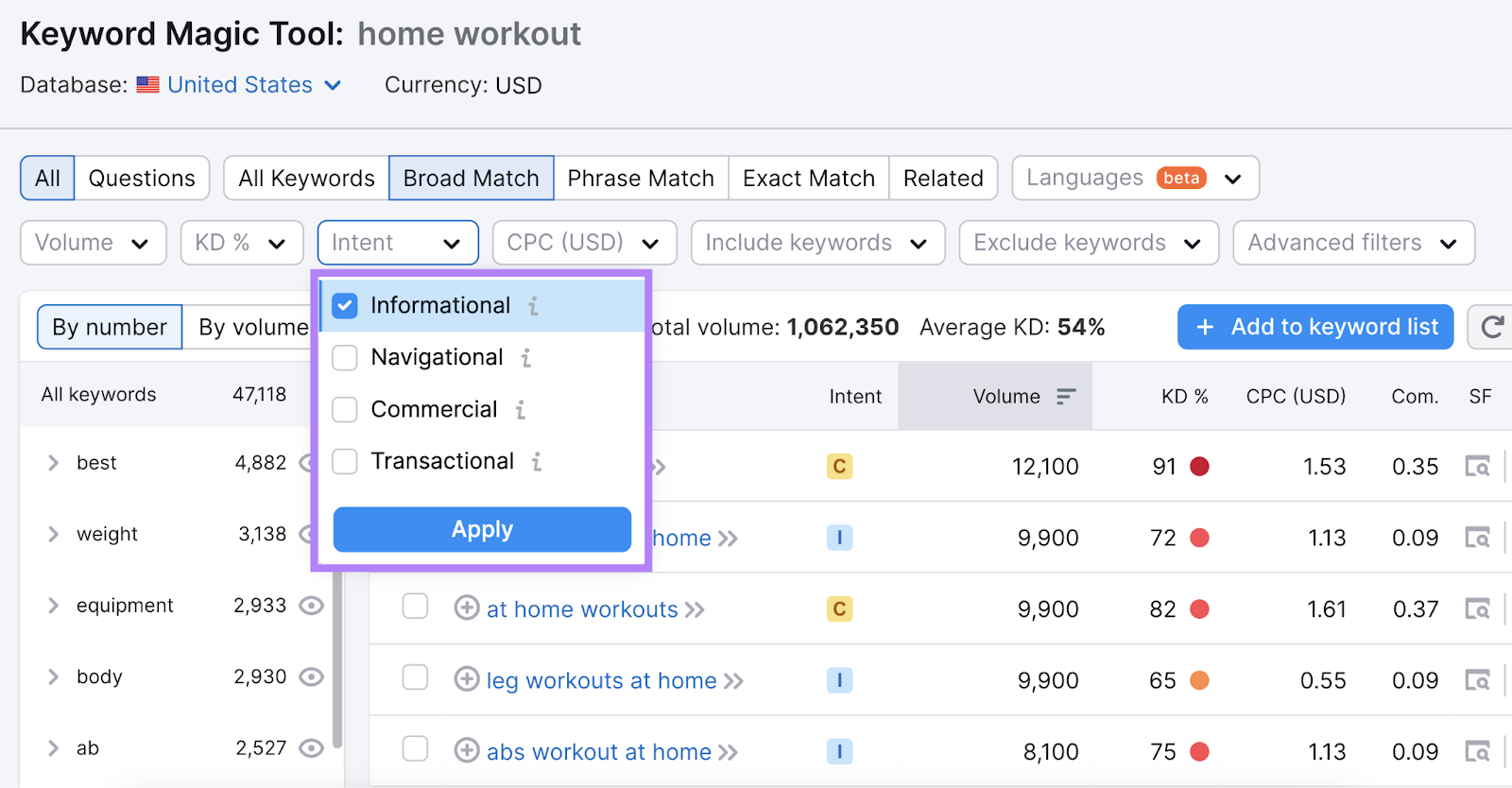
This way, you’ll focus on keywords searchers typically use to find information or answer basic questions.
Click any keyword to view more information in the Keyword Overview tool. Here, you can see related questions that spark ideas and guide your content.

Use the “SERP Analysis” panel to see pages that already rank for the keyword. Click any of them to open the webpage and see how the competition is covering the topic—and how you can do better.
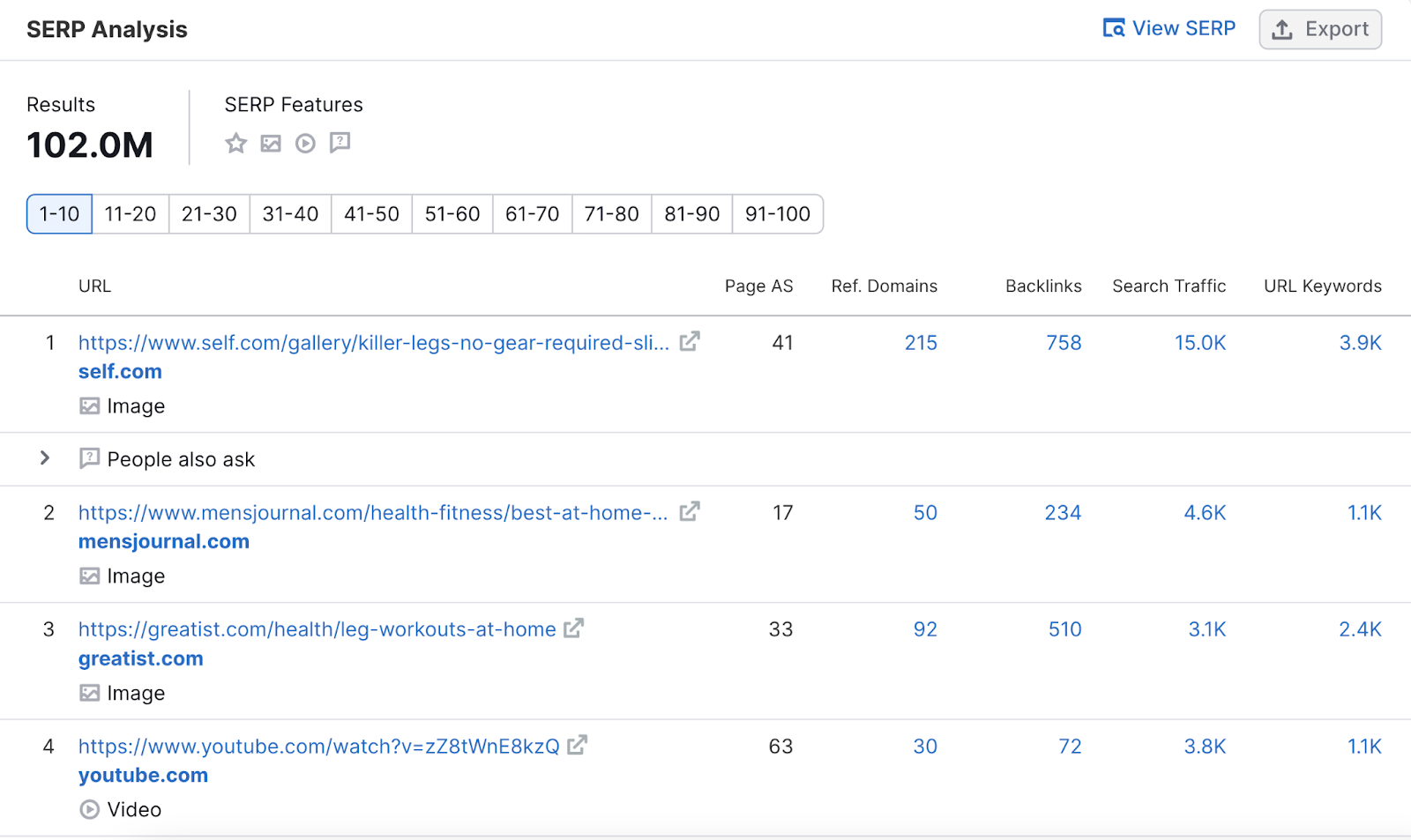
Stage 2: Consideration
Once customers realize they need a specific type of solution to address their problem, they begin thinking about products and services. At the consideration stage, they compare available options.
While customers still aren't prepared to buy, they are receptive to marketing content that helps them make an informed purchase decision. Product marketing content tends to be most effective at this stage.
Examples of consideration-focused marketing initiatives include:
- In-depth guides that compare your product or service to the competition
- Case studies that share product experience from a customer perspective
Use Semush’s Topic Research tool to build on the keywords you identified with the Keyword Magic Tool. Input a keyword and click “Get content ideas.”
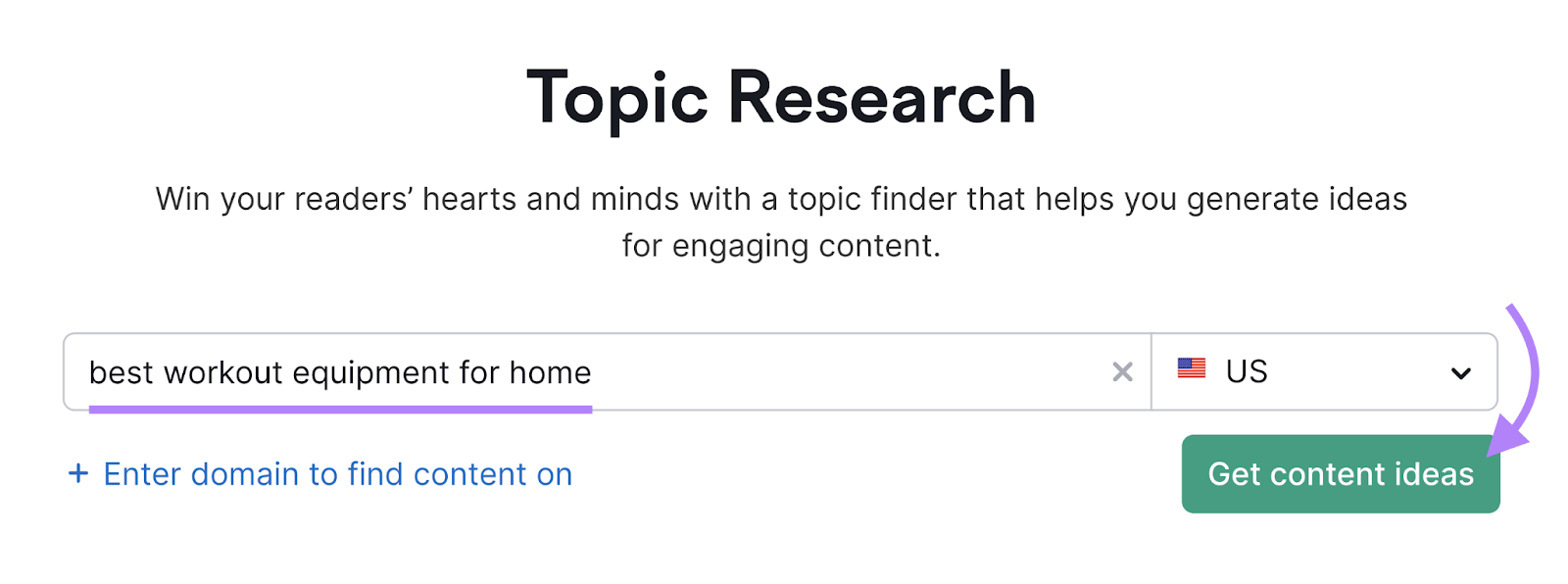
You’ll see a list of related topics ordered by search volume. The higher the monthly search volume, the more popular the topic is.
Click “Show more” below any topic to see headlines and questions. Use this data to brainstorm ways you can create content for these topics in ways that are likely to interest your prospects.
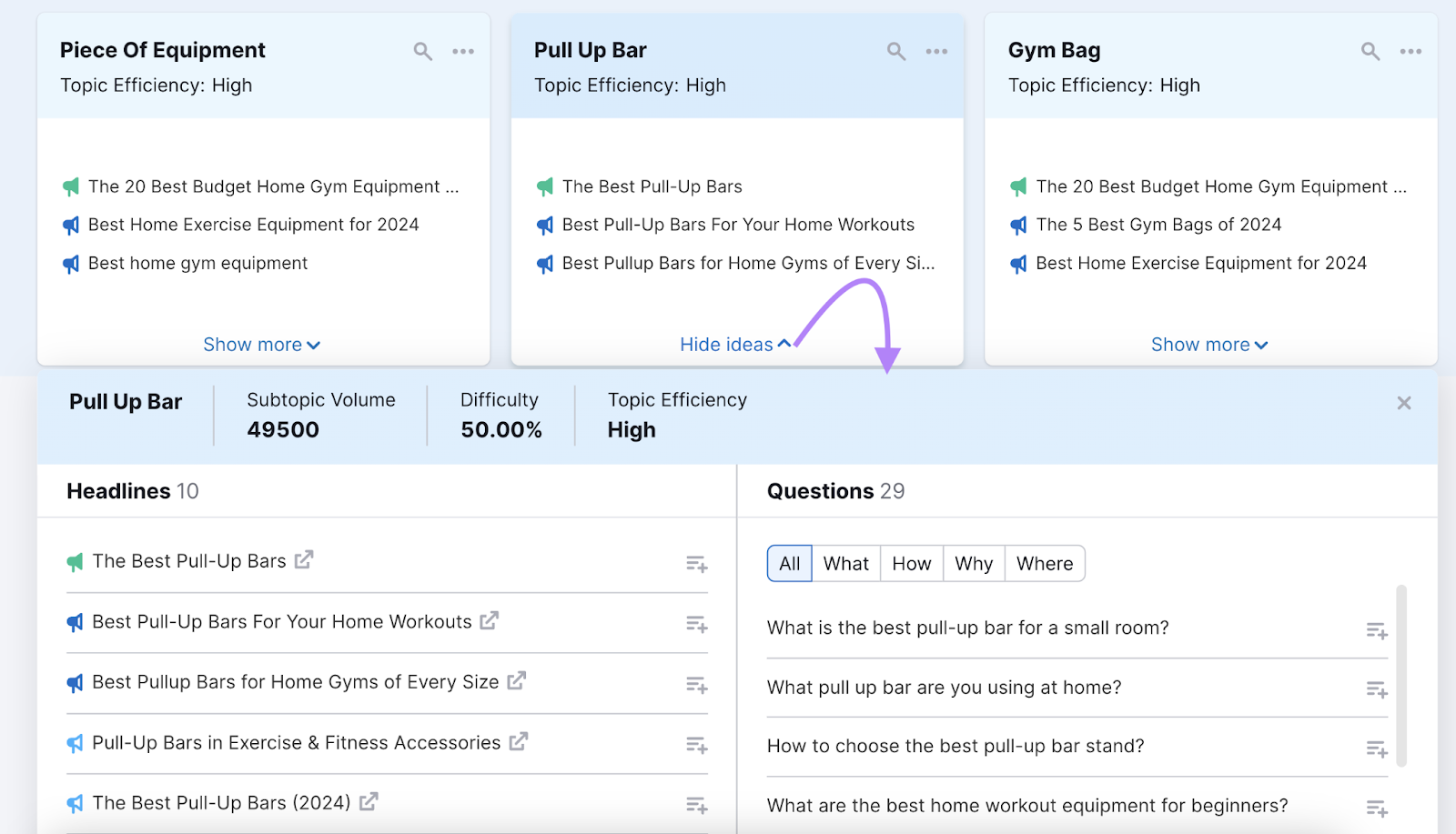
Stage 3: Decision
After considering the available options, customers are ready to make a purchase decision. This doesn't always equal a conversion for your brand, though. Customers may decide to buy from you or go with a competitor.
At the decision stage, customers tend to seek more persuasive marketing content. They may also be open to incentives that encourage them to buy.
Examples of decision-focused marketing initiatives include:
- Product demonstrations or service consultations
- Abandoned cart emails or website pop-ups that incentivize customers to complete a purchase
Use Semrush’s Traffic Analytics tool to research your competitors’ audiences.
Enter one of your competitor’s domains and press the space bar. Next, choose additional competitors from the list that automatically generates. Or, enter competitors manually. Then, click “Analyze.”
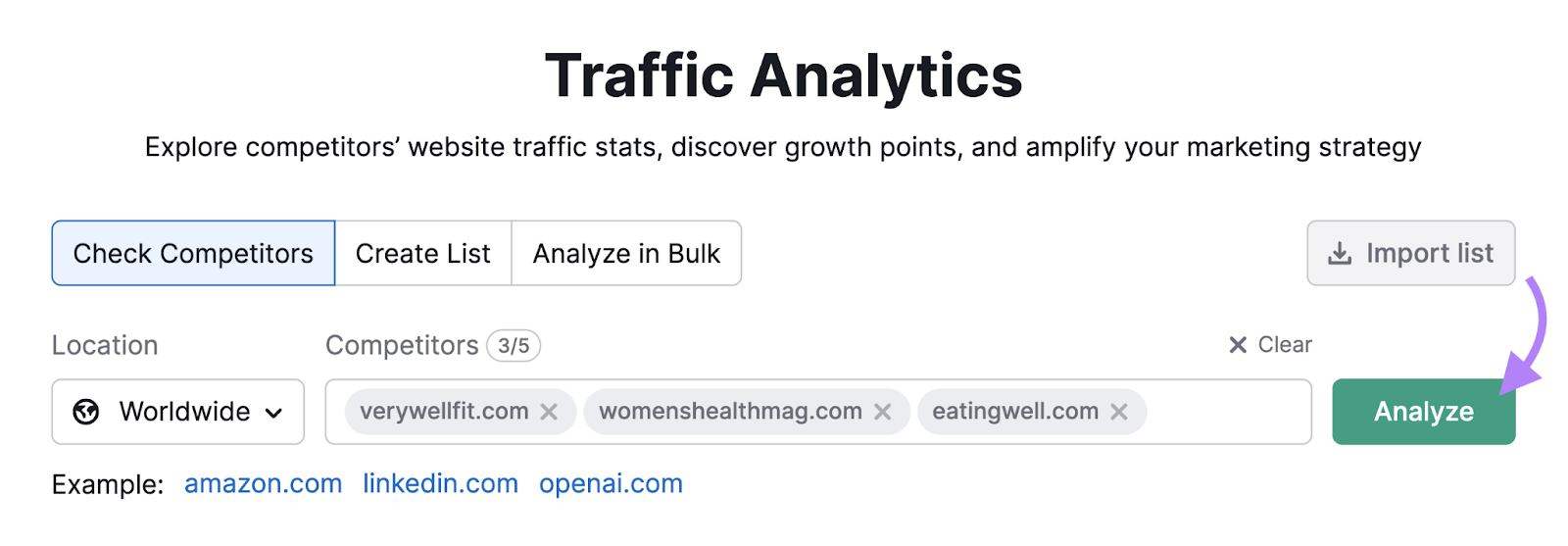
Open the “Audience Overview” panel to see how the audiences for each competitor compare. This tool compares audiences in terms of demographics, socioeconomics, and behavior.
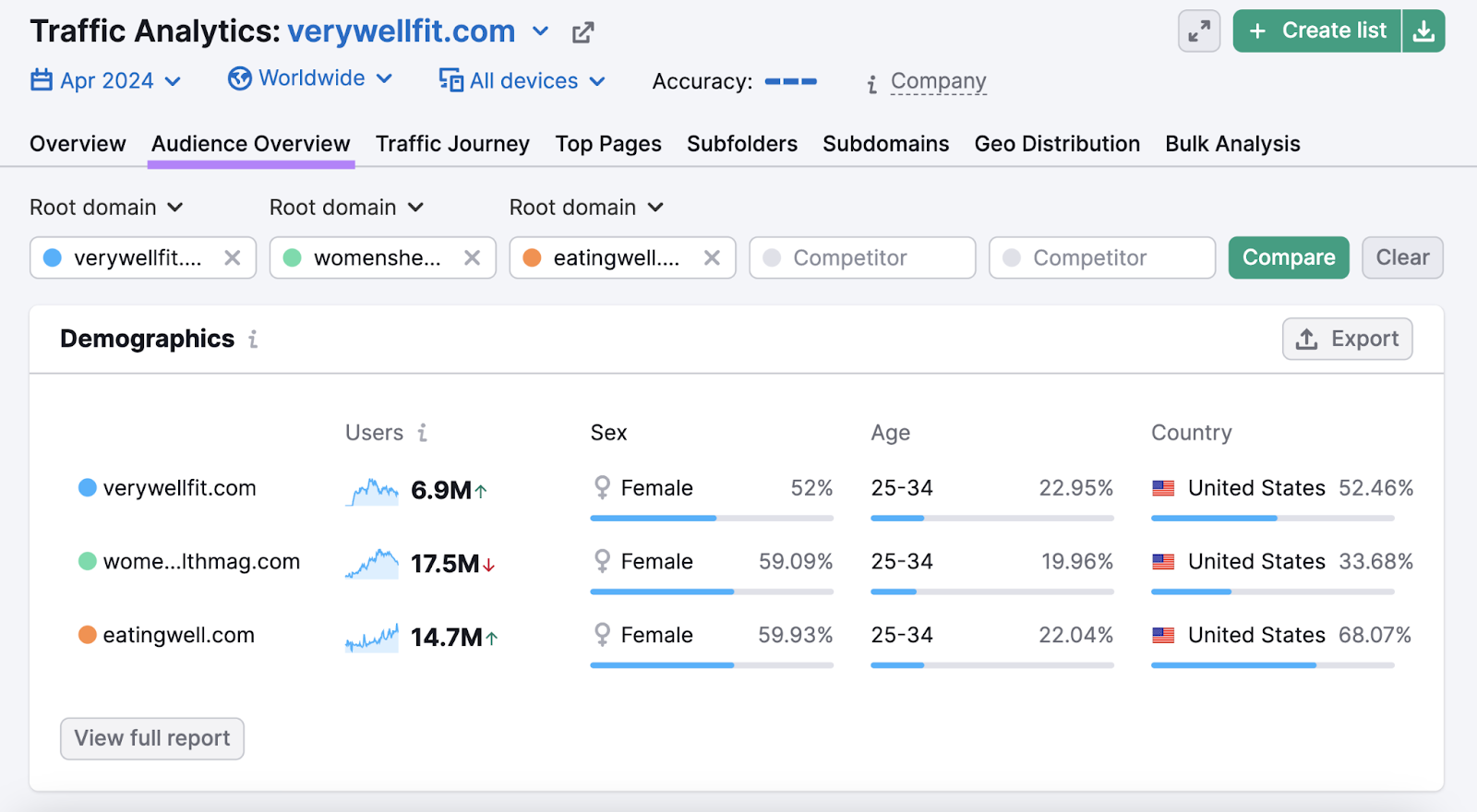
To see what website content drives the most traffic for your competitors, click the “Top Pages” tab. You’ll see a short list of pages whose traffic is trending up and a full list of top-performing pages.

Use this data to inform how you differentiate your brand, product, or service from the competition.
Stage 4: Retention
Ideally, the first purchase is only the beginning of most of your customer relationships. After all, acquiring new customers tends to cost more than retaining existing ones.
At the retention stage, customers may be open to making another purchase. But they still need to be persuaded. Incentives can work well, as can campaigns that nurture their relationship with your brand.
Examples of retention-focused marketing initiatives include:
- Live chat for customer support throughout the buying process
- Email marketing sequences that help customers get more value from your product or service
Stage 5: Loyalty
By now, your customers have become repeat buyers—but that isn't all. At the loyalty stage, their customer satisfaction level is so high that they promote your brand to friends and family.
Creating a positive customer experience is the key to cultivating loyal customers. When you make it easy for brand advocates to recommend your business, customers may be even more likely to refer your brand.
Examples of loyalty-focused marketing initiatives include:
- Discounts, special offers, and sneak peeks of new products or services
- Loyalty programs that encourage customers to refer friends and family
7-Stage Customer Journey
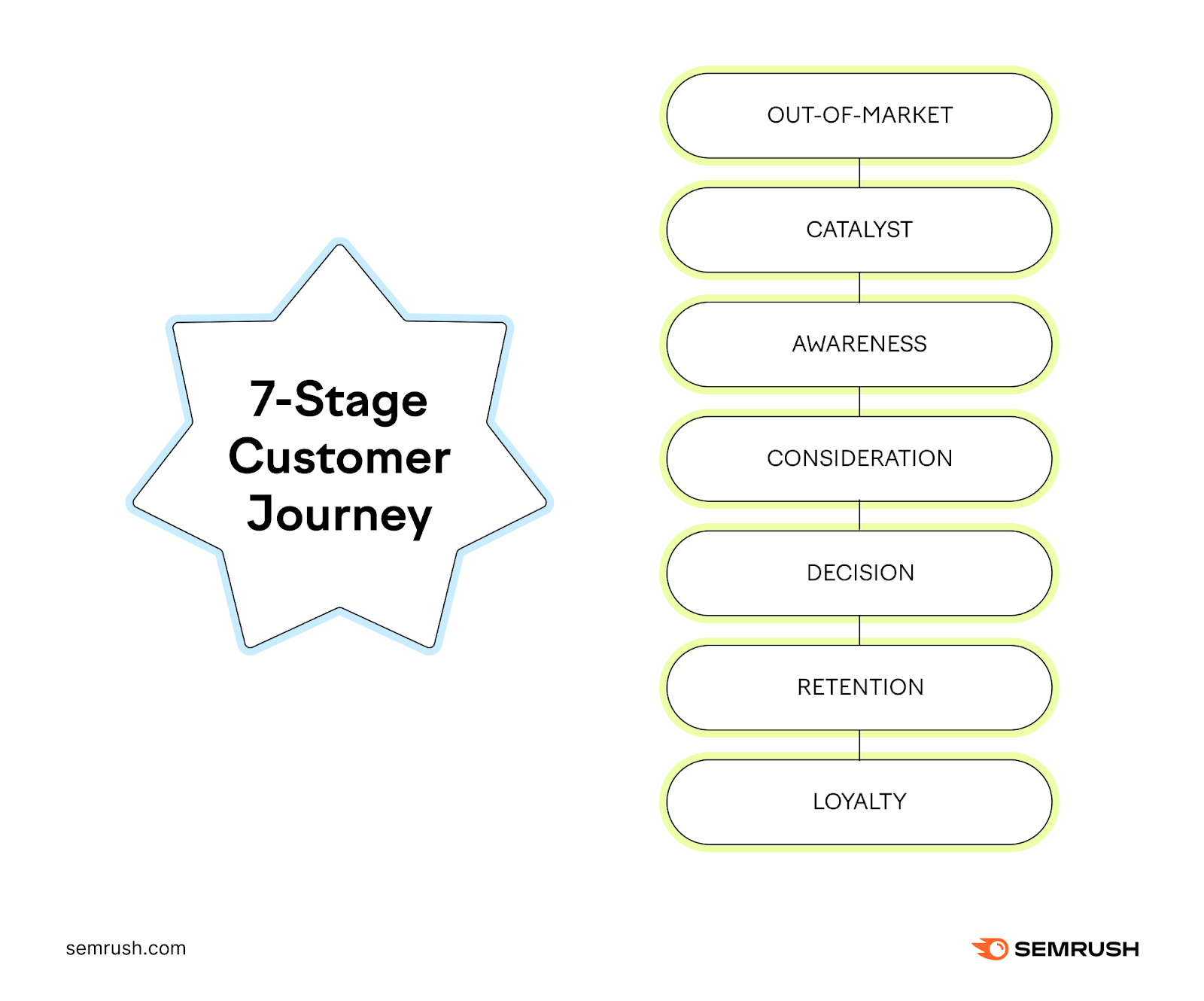
A seven-stage customer journey starts before customers become aware of your brand.
Out-of-Market
At the beginning of this seven-stage journey, potential customers are considered “out-of-market.” They know they want to achieve a goal or make a change. But aren't sure how to go about it.
Because they aren't “in-market,” they aren't actively seeking solutions or researching options. However, they're often open to marketing content that speaks to their problems and inspires them to find answers.
Brand awareness content can keep your brand top-of-mind with these out-of-market prospects.
Examples of out-of-market content include:
- Paid social ads
- Display ads
Catalyst
To move forward in the customer journey, out-of-market prospects experience an event that prompts them to take action. For example, they may realize an urgent need to solve a business problem.
This catalyst causes prospects to go from out-of-market to in-market. At this stage, they're ready to make a change and start seeking solutions.
Just like in the previous stage, you can use display ads and paid social ads to get prospects thinking about your brand as they start to shift focus.
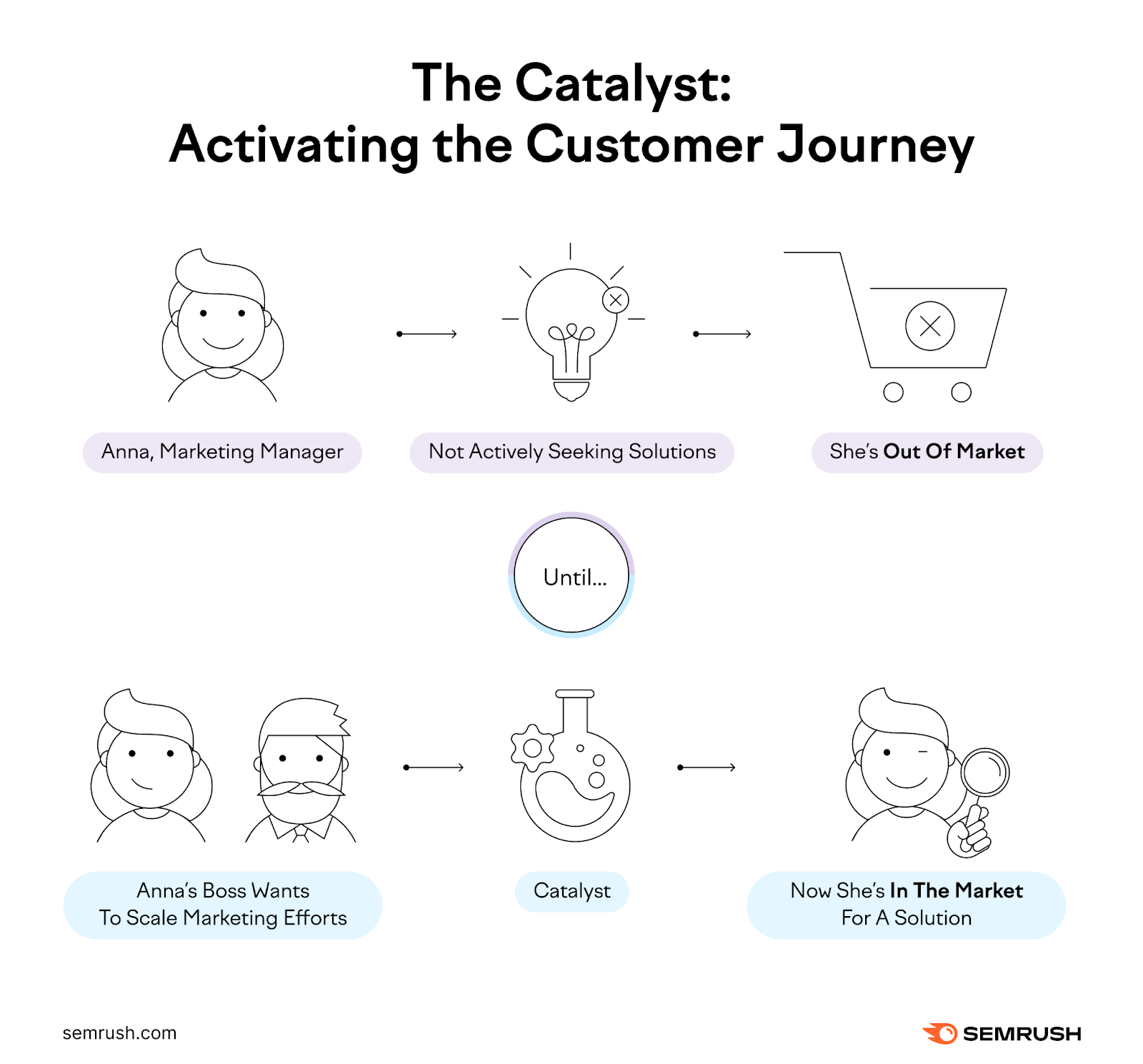
5-Stage Customer Journey
After these two initial stages, customers progress through the five stages above. They go from awareness to loyalty—learning about brands, making buying decisions, and becoming brand advocates.
How to Map Out the Customer Journey
While the stages of the customer journey are relatively standard, the touchpoints at each stage are unique to your business. Here's how to create a customer journey map for your brand.
Start with Customer Research
Customer research gives you a deeper understanding of how and why real customers go through the buying process. Use these tactics to gather data on customer actions and emotions:
- Interview customers: Talk with customers via phone, video, or email interviews. Alternatively, create customer surveys with multiple-choice and open-ended questions.
- Talk to customer-facing teams: When you can't talk directly with customers, interview the teams that interact with them most. For example, talk with customer service reps or customer support teams.
Ask targeted questions to discover:
- Where did you first hear about our company?
- What's the main problem you want to solve?
- What's your biggest challenge related to this issue?
- What are the most important factors when you make a purchase decision?
- How helpful do you find our customer service team?
- On a scale of one to 10, how likely are you to recommend our brand to friends and family?
Use this data to create a buyer persona. It’s a fictional representation of your ideal customer based on actual customer research. Use it to create more effective customer journey maps and marketing materials.
Use Semrush Persona to build your buyer persona. Here’s an example of a B2B buyer persona template.
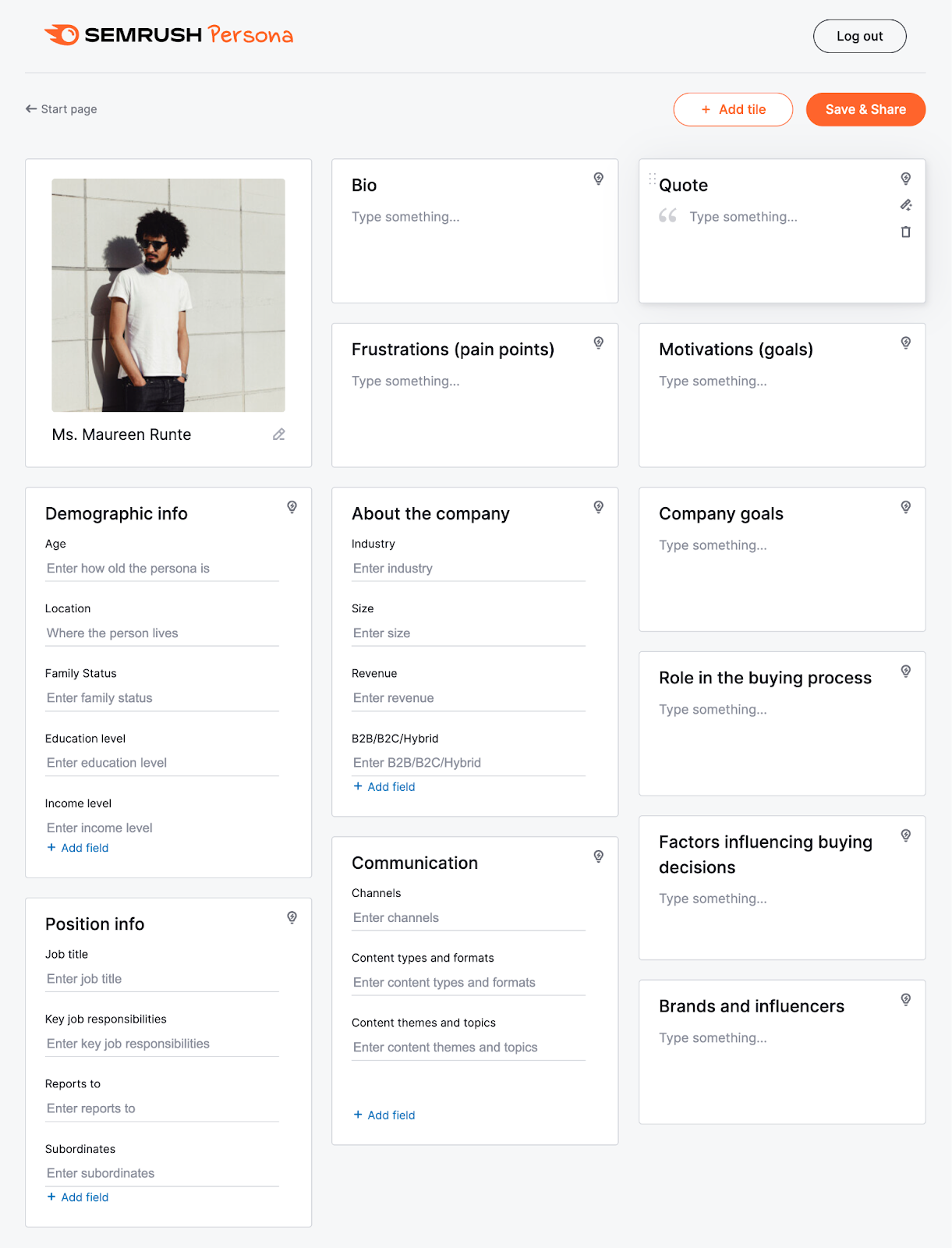
It includes information like customer demographics, job title, and company details. It also highlights pain points, goals, and factors influencing buying decisions.
Identify Customer Touchpoints
Next, map out the touchpoints the average customer has with your brand. Use your customer research and your marketing analytics (e.g., Google Analytics 4) to create a list of the steps.
For each touchpoint, detail:
- The marketing channel
- The content type
- How the touchpoint addresses the customer's needs
- How you expect the customer to feel at this touchpoint
- What you anticipate the customer doing next
For example, one touchpoint could be a social media post linking to a comparison page on your website. It may meet the customer’s needs by allowing in-depth research, which may make the customer feel more decisive. You may expect the customer to sign up for a free trial next.
Define Customer Journey Stages
Now, put the touchpoints in order. Align them with the five or seven customer journey stages.
Consider questions like:
- Which stage has the most touchpoints?
- Which stage has the most valuable touchpoints?
- Where are the biggest points of friction in this customer journey map?
- Is this map missing any touchpoints that could make the journey more efficient?
Put It All Together

Finally, compile your findings and make the customer journey map actionable. Optimize your marketing efforts to focus on key touchpoints and channels that impact your target audience most.
In some cases, that may require making a plan to invest in new channels or content. Work with your team to incorporate these ideas into your marketing strategy and allocate the required resources.
Further reading: Sales Funnel Optimization: 9 Ways to Maximize Conversions
The Importance of Understanding the Customer Journey
When you understand the customer journey, you gain invaluable insights. Then, you can apply these findings to enhance how customers experience your brand. And improve results from your marketing efforts.
Here are some of the biggest benefits of using customer journey mapping tools:
Learn How and Why Customers Interact with Your Brand
The customer journey mapping process involves analyzing all the interactions customers have with your brand. As you conduct this research, you'll discover how customers engage with your marketing.
You'll also get a better sense of why they engage. Mapping this journey helps you see interactions from the customer’s perspective. It gives you an in-depth look at their emotions and the reasons for their actions.
All of these data points contribute to a clearer understanding of customer behavior. Use this data to optimize the journey.
Anticipate and Respond to Customer Behaviors
The more you know about how and why your target audience engages with your brand, the easier it is to anticipate the next step in their journey. Then, use this information to improve your marketing.
For example, suppose you learn that customers who read a certain type of blog post often read a case study next. You could help them reach this touchpoint faster by adding a case study pop-up or CTA to the blog post.
Here’s an example from a blog post comparing Stampli and other solutions.
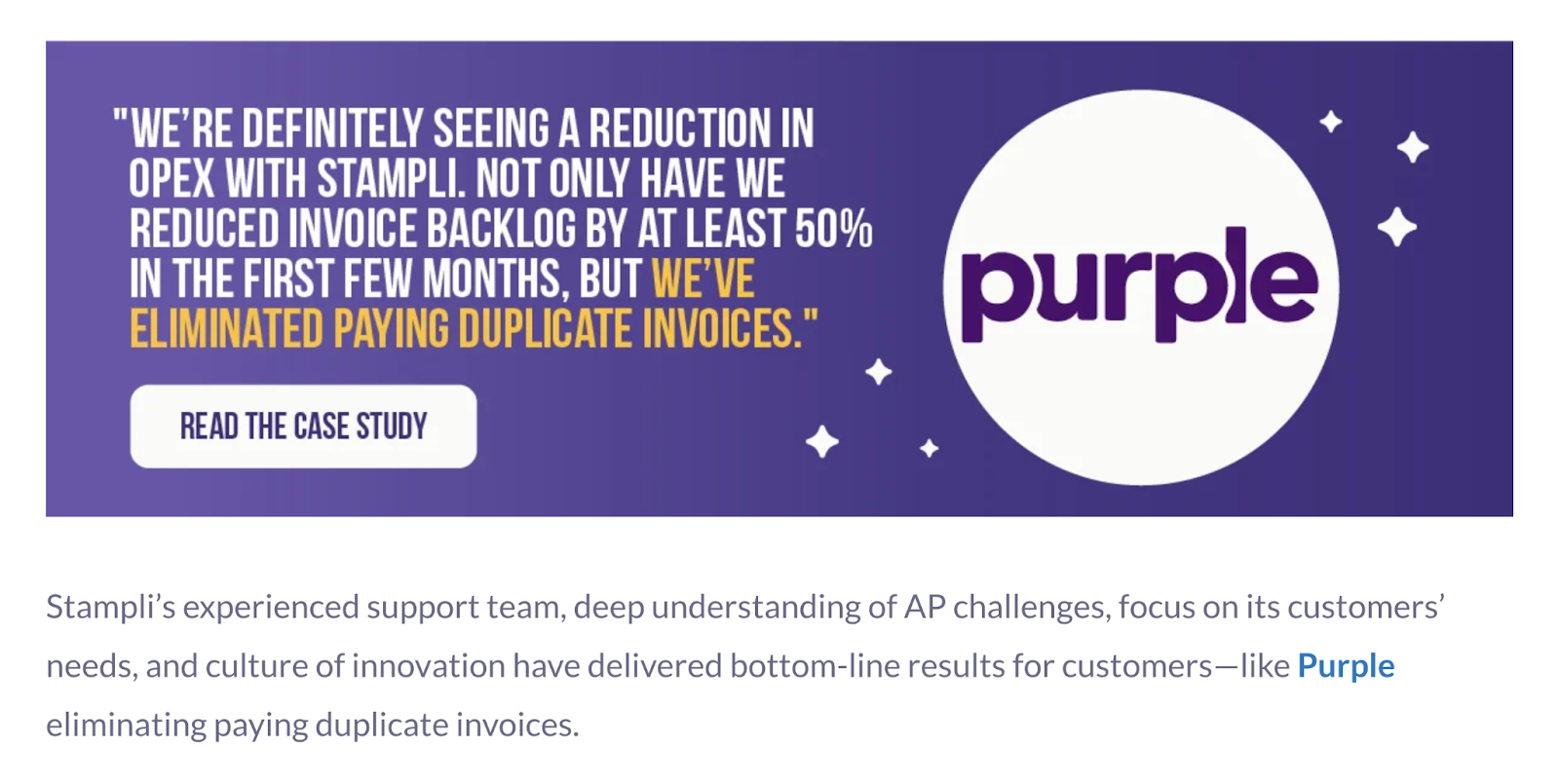
Identify Your Most Valuable Touchpoints
As you develop your digital customer journey map, you'll likely find that some touchpoints generate superior value. For example, you may find that customers who interact with your paid social ads have the highest lifetime value.
With these insights in mind, rework your marketing funnel. By guiding more customers to high-value touchpoints, you can focus your efforts on what drives the most return on investment (ROI).
Discover New Touchpoints to Cultivate
Many touchpoints in your customer journey are likely to be deliberate. For example, you may send abandoned cart emails because you know they incentivize customers to make a purchase decision.
But as you map out the entire process, you may discover some touchpoints that are less intentional. For example, you may find your website's new chatbot is excellent at improving customer loyalty.
Use your newfound knowledge to leverage this type of engagement. For example, when existing customers return to your website, prompt your chatbot to welcome them with a custom greeting.
Spot and Address Points of Friction
At the same time, some customer touchpoints lead to negative outcomes. For example, customers who visit certain landing pages may be less likely to make repeat purchases.
During this process, find points of friction and address them. Building on the example above, you could update low-performing landing pages to fit user intent better.
Increase Conversions and Customer Loyalty
The better you understand customer preferences and behaviors, the more insight you'll have into how to improve marketing outcomes. In other words, you'll know which marketing levers to pull—and when.
As a result, your marketing campaigns can drive more conversions and attract more loyal customers. They can also contribute to key business goals like improving ROI.
Improve the Entire Customer Experience
Mapping customer journey steps can also help you improve your customers' experience. This outcome is more important than you may think.
In fact, 88% of people consider the company's customer experience as important as its products or services, according to Salesforce. That means creating a great experience for your customer base can drive better results at every stage of the journey.
Drive More Sales by Mapping the Customer Journey
When you know how customers engage with each touchpoint, you can optimize your marketing strategy to guide them through the entire customer journey as efficiently as possible.
Use Semrush to manage your marketing channels effectively. With 55+ tools, Semrush handles everything from SEO and content marketing to social media marketing and market research.
Sign up for a free trial and start using the Keyword Magic Tool to find relevant keywords for different stages of the customer journey.
Then, use Topic Research to uncover content ideas, Traffic Analytics to research your competitors, and Semrush Persona to create your buyer personas.
